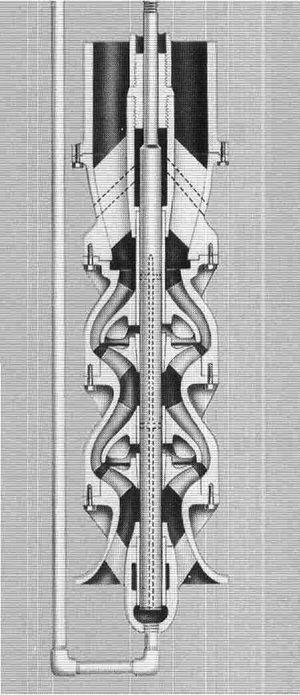How important is the hardfacing requirement below the sleeve bearings in the 416 stainless steel (ss) shaft of a vertical turbine pump used to move condensate? Consider an example with a condensate pump that has carbon bearings.
In one of my consultations, an end user (during initial startup) considered using a sacrificial bronze bearing because fine abrasive contaminants were expected in the pumped liquid. A 1/16-inch perforation strainer was installed, but fine abrasives could still pass through the pump. The expected abrasive contaminants were the result of leftover construction debris. Once this debris was gone, the liquid would not contain the abrasive material. The liquid during normal operation would be virtually debris free. Hardfacing the bearings could be costly, and it remained unclear how effective the hardfacing would be and how it would perform during startup.
Making the Decision
Decisions regarding the hardfacing of pump components are a matter of expense and convenience. For a vertical turbine pump, 316ss, 17-4PH, nickel alloy or other material can be applied. Sleeve type bearings are provided at each stage to assure stable operation away from critical speed.
The vertical turbine pump moves condensate, which is usually hot water. Hot water has poor lubricating characteristics and does not develop a stable hydrodynamic film to support the shaft. For this reason, carbon bearings are a good choice, because carbon has good self-lubricating properties.
However, when abrasives are present in the pumped liquid, the shaft and bearings wear because carbon is soft. To combat this, the shaft can be hard-coated and bearings that are made of a better wear-resistant material are used. Leaded bronze or hardened nickel-plated shafts are known to work well in abrasive-laden fluids. Regular bronze (which in recent years replaced leaded bronze because of environmental concerns) also works, although not as well. A thermoplastic amorphous polymer often replaces bronze in centrifuge applications (these are much slower running and tougher than pumps) at 40 to 600 rpm.
Bearings made of Polyetheretherketone (PEEK) could work well in abrasive applications and could be good candidates in this example. It can handle abrasives and elevated temperatures better than other engineered plastics.
If the abrasion is continual, rifle drilling of bowl shafts can be used for bearing protection (see following image). However, this type flushing is probably excessive for this condensate pump example since the abrasive environment is temporary.

Most likely, hardfacing the shaft will prove beneficial because it will prevent the frequent replacement of the softer, carbon shaft. Bronze bearings probably will wear faster than PEEK. However, if the system is expected to be free (or virtually free) of abrasives, bronze may be acceptable. If abrasives are expected for an extended time, bronze bearings will wear quickly and clearances will open. This may cause shaft vibration. The added inconvenience of pulling the pump and replacing the bearings and/or shaft is also expensive. End users should carefully consider the extended operating conditions when deciding what material is best for shafts and bearings.
Periodic Vibration Measurements
I also suggest periodic measurements of pump vibrations. This information can provide end users with an indirect warning of wear. Interestingly, increased vibration does not appear to be linear with time. Its rate becomes exponential after critical wear of the bearings takes place. Early detection through vibration measurements could prevent more extensive pump component damage. P&S


